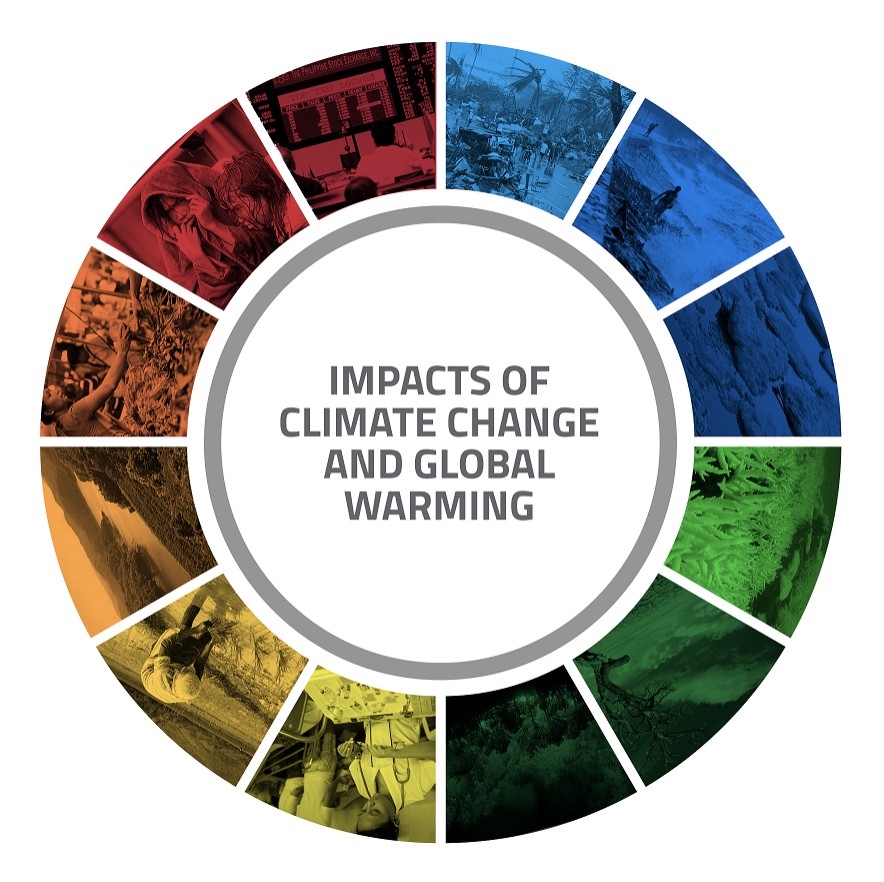
Climate change is one of the most fundamental challenges ever to confront humanity.[1] The adverse impacts are already being seen and will intensify exponentially over time if nothing is done to reduce further emissions of greenhouse gases. The Philippines, one of the countries at greatest risk to climate-related hazards,[2] is projected to have the following scenarios in the coming years:
Increased Temperature[3]
The observed temperature in the Philippines has increased by 0.68°C over the past 65 years (1951-2015); warming at an average rate of 0.1°C per decade.
The average temperature in all areas in the Philippines is expected to continue to rise by as much as 0.9°C to 1.9°C (under RCP 4.5) and 1.2°C to 2.3°C (under RCP8.5) by mid-21st century.
Wetter Wet Season, Drier Dry Season[4]
Increasing trends in annual and seasonal rainfall associated with extreme rainfall events were observed in many parts of the country.
Most areas in Ilocos Region and Mindanao will see increased wet days (defined as daily rainfall exceeding 300 mm) during the southwest monsoon season (June, July, August) until the transition (September, October, November), while the rest of the country will see decreased trend.
Areas in the Eastern portion of Visayas and Mindanao will see increased trend in rainfall during the northeast monsoon season (December, January, February).
The number of dry days (defined as rainfall with less than 2.5mm) is also expected to increase in some parts of Luzon and Mindanao throughout the year.
Frequency and Intensity of Extreme Weather Events[5]
Tropical cyclones entering the Philippine Area of Responsibility (PAR) and made landfall from 1951 to 2015 shows a minimal decreasing trend. However, there is a slight increase in the frequency of intense tropical cyclones (exceeding 170kph) from 1980 to 2015.
The frequency of tropical cyclones was found consistent with the currently observed trends. On the contrary, the intensity of typhoons and tropical storms are projected to increase.
This is consistent with the report of the IPCC that “In 21st century, the average annual number of tropical cyclones in the Western North Pacific is expected to decrease, and that an increase in the frequency of strong tropical cyclones in the region is ‘more likely than not.’”
Sea Level Rise[6]
The sea level has risen by 5.7- 7.0 millimeters per year over certain parts of the Philippines from 1993-2015, which is approximately double the highest global average rate of 2.8-3.6 millimeters per year.
Projections reveal that the sea level in the country will be continue to be slightly larger than the global average. The increase is expected to be by approximately 20cm by the end of the 21st century (under RCP8.5 scenario).
These projections will result to increased frequency and severity of storm surge, floods, landslides, and droughts, among others. These exacerbate risks to agriculture, energy, water, infrastructure, human health, and coastal ecosystems.
[1] IPCC, 2013: Climate Change 2013: The Physical Science Basis. Contribution of Working Group I to the Fifth Assessment Report of the Intergovernmental Panel on Climate Change. https://www.ipcc.ch/site/assets/uploads/2018/02/WG1AR5_all_final.pdf
[2] Global Peace Index Measuring Peace in A Complex World. (2019). https://reliefweb.int/sites/reliefweb.int/files/resources/GPI-2019-web003.pdf
[3] PAGASA, 2018: Observed and projected climate change in the Philippines. Philippine Atmospheric, Geophysical and Astronomical Services Administration. Quezon City, Philippines. https://icsc.ngo/wp-content/uploads/2019/07/PAGASA_Observed_Climate_Trends_Projected_Climate_Change_PH_2018.pdf
[4] Ibid.
[5] Ibid.
[6] Ibid.